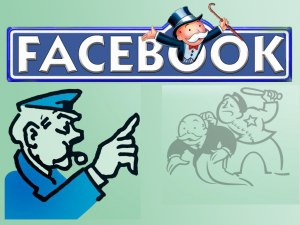 From time to time I have read Guy Kawasaki’s blog. It was usually engaging, informative even if I didn’t always agree. It also exposed sides of the venture beat that I wasn’t familiar with. I came to respect Guy and still do.
From time to time I have read Guy Kawasaki’s blog. It was usually engaging, informative even if I didn’t always agree. It also exposed sides of the venture beat that I wasn’t familiar with. I came to respect Guy and still do.
When Guy started his new project truemors.com I was stunned. Truemors was pitched as a place to post inside scuttlebutt. In effect a place to post rumors and gossip. This was the last thing I would have thought Guy would get into.
This shock prompted me to email Guy to quench my curiosity. To my surprise Guy started to correspond and I started to get the feeling that what had transpired was only partly a change in Guy.
After some reflection I realized that a big part was the crumbling of a personal mythology that had developed around Guy’s blog. When we expose parts of ourselves on the web others develop a mental picture of who we are as people. The higher the signal to noise ratio (more quality/less crap) the more respect and expectations.
In this instance I had developed respect for Guy that was tied to the perception of Guy as a VC and analyst. A perception that he had such insight as to be able to see the forest for the trees. Truemors struck me as trivial and fluff. An idea that I would have discounted and rejected.
Of course the reality is that trivial and fluff with the right twist can be more viral and successful than something that took years to develop and millions of dollars. In many ways the paradigms have changed and it truly is the little guy in his garage that can come up with the next great thing for very little money. Throw it against the wall and see what sticks.
Spam?
When I added Guy on Facebook I received a message to try Truemors. Mind you I get messages from time to time from other developer friends who are developing Facebook apps to tryout their wares and don’t think anything of it. Once again I apply a double standard for Guy.
I told myself that it was because Guy wasn’t commenting on others work or talking about the next great thing he was involved with. Guy was selling Truemors to us. In my mind he had violated a trust. The critic is not allowed to be a promoter.
In my mind Guy was now trading social capital for the success of this enterprise. The earned respect and myth being traded for a chance that you might try his application. That it might be enough to help put Truemors over critical mass.
So of course I send Guy a message, what gives? In Guy’s reply he asks “I have to do what I have to do, right?”.
Guy was right; you do have to give it your all. He wasn’t being any more spam than my other friends, he was simply promoting again. I once again realized that it was my perception that was coloring all of this. I had been affronted when he dared stray from my preconceptions. Guy was simply using his assets to help his investment succeed. This was business.
In the end I have to thank Guy for an education. Once again (as has happened many times before for me) I have learned that people are people. Putting someone on a pedestal clouds our vision of the real person. I would rather know the person than the myth.
One more thing, Guy, good luck with Truemors.
 At almost 500 million active users and half of all internet users worldwide, Facebook is a “natural monopoly”. It comprises over 75% of the internet users in the US. If you are making social applications or games Facebook is effectively the only game in town.
At almost 500 million active users and half of all internet users worldwide, Facebook is a “natural monopoly”. It comprises over 75% of the internet users in the US. If you are making social applications or games Facebook is effectively the only game in town.

 “It” is a paradigm shift. A concept that may be elusive, visceral and something that we need to understand completely to be part of the conversation. We see the symptoms in sales statistics and market reactions and try to understand it in terms of what we already know.
“It” is a paradigm shift. A concept that may be elusive, visceral and something that we need to understand completely to be part of the conversation. We see the symptoms in sales statistics and market reactions and try to understand it in terms of what we already know.





